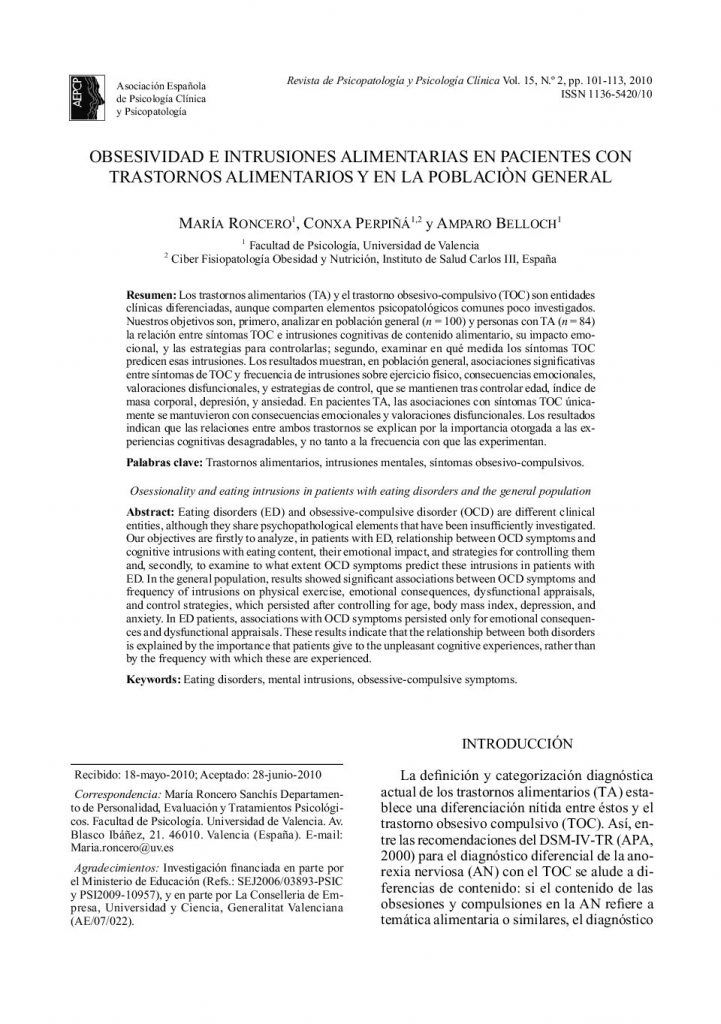Obsesividad e Intrusiones Alimentarias en pacientes con trastornos alimentarios y población general.

- Efectividad de las terapias psicológicas: Un análisis de la realidad actual.
- Obsesividad e Intrusiones Alimentarias en pacientes con trastornos alimentarios y población general.
- Efecto del formato de intervención individual o grupal en la estimulación cognitiva de pacientes con enfermedad de Alzheimer.
- Depresión y calidad de vida relacionada con la salud en pacientes con artrosis: Diferencias de género.
- Cuestionario de Ayuda Recibida de la Ex pareja (CARE): Un Instrumento breve para evaluar la co-parentalidad post divorcio.
- Dionisio Pérez y Pérez (1926-2010)
Eating disorders (ED) and obsessive-compulsive disorder (OCD) are different clinical entities, although they share psychopathological elements that have been insufficiently investigated. Our objectives are firstly to analyze, in patients with ED, relationship between OCD symptoms and cognitive intrusions with eating content, their emotional impact, and strategies for controlling them and, secondly, to examine to what extent OCD symptoms predict these intrusions in patients with ED. In the general population, results showed significant associations between OCD symptoms and frequency of intrusions on physical exercise, emotional consequences, dysfunctional appraisals, and control strategies, which persisted after controlling for age, body mass index, depression, and anxiety. In ED patients, associations with OCD symptoms persisted only for emotional consequences and dysfunctional appraisals. These results indicate that the relationship between both disorders is explained by the importance that patients give to the unpleasant cognitive experiences, rather than by the frequency with which these are experienced.
Los Trastornos Alimentarios (TA) y el Obsesivo-Compulsivo (TOC) son entidades clínicas diferenciadas, aunque comparten elementos psicopatológicos comunes poco investigados. Nuestros objetivos son, primero, analizar en población no clínica (n=100 ) y personas con TA (n=84) la relación entre síntomas TOC e intrusiones cognitivas de contenido alimentario, su impacto emocional, y las estrategias para controlarlas; segundo, examinar en qué medida los síntomas TOC predicen, en pacientes con TA, esas intrusiones. Los resultados muestran, en población general, asociaciones significativas entre síntomas de TOC y frecuencia de intrusiones sobre ejercicio físico, consecuencias emocionales, valoraciones disfuncionales, y estrategias de control, que se mantienen tras controlar edad, índice de masa corporal, depresión, y ansiedad. En pacientes TA, las asociaciones con síntomas TOC únicamente se mantuvieron con consecuencias emocionales y valoraciones disfuncionales. Los resultados indican que las relaciones entre los TA y el TOC se explican por la importancia que las personas dan a sus experiencias cognitivas desagradables, y no tanto a la frecuencia con que las experimentan.



